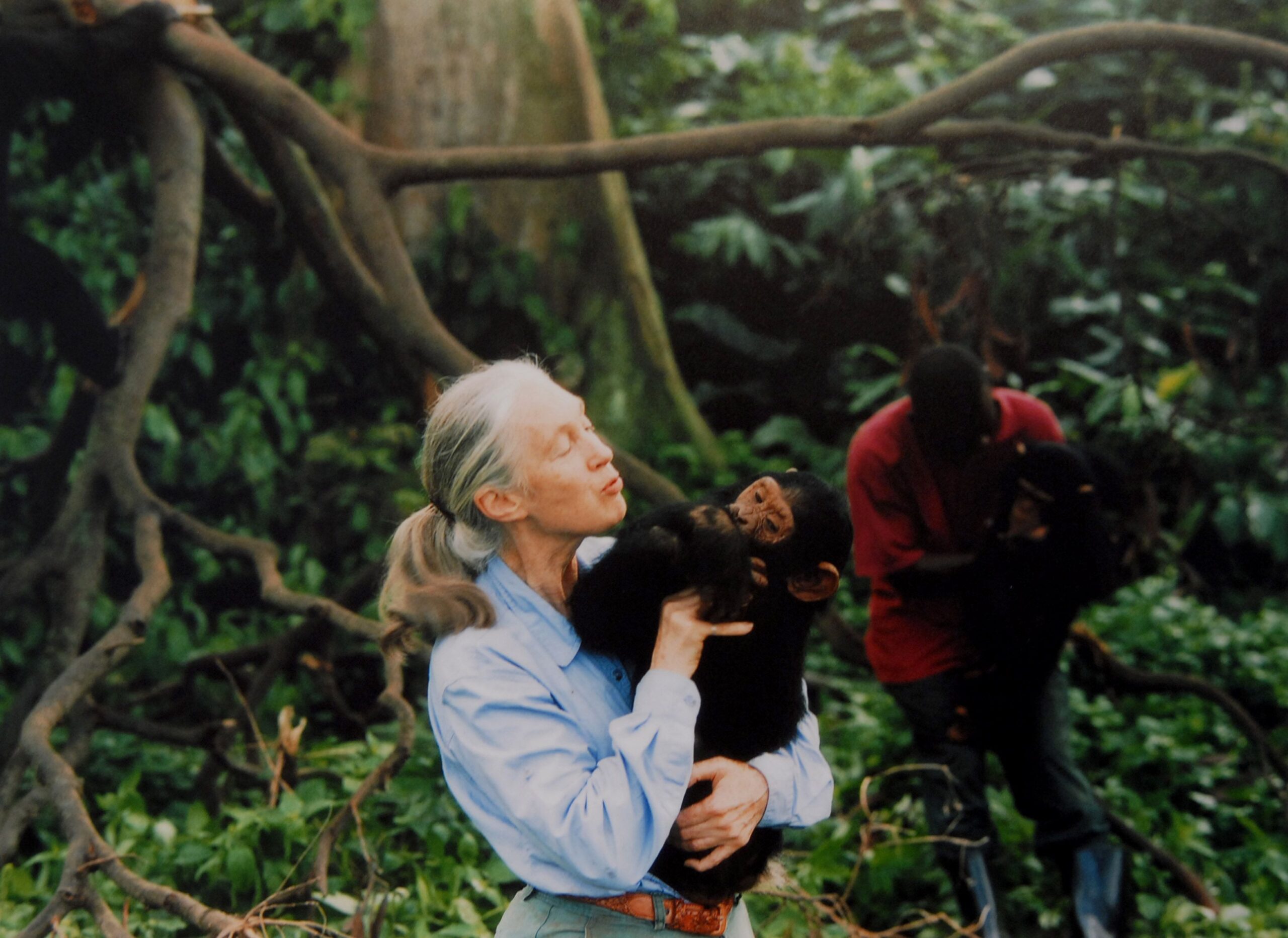The best nature documentaries are the ultimate trip, minus the drugs. I’m talking about the kind of films that make you feel like you’re sweating in the savanna, freezing in the Arctic, or staring into the eyes of a predator. The best documentaries don’t feed you pretty pictures and happy endings—they give you the deep, dark corners of the wild, where survival is an indifferent battle. The ones that make you question everything you thought you knew about the circle of life and what it means to be truly alive.
Here’s a guide to the best of the best nature documentaries. These top picks are a reminder that the planet isn’t a backdrop for our story, but a living, breathing entity that moves forward whether we choose to pay attention or not.
Need something to watch your movie on? Check out our guides to the Best Streaming Devices, Best TVs, and Best Soundbars.
Power up with unlimited access to WIRED. Get best-in-class reporting that’s too important to ignore for just $2.50 $1 per month for 1 year. Includes unlimited digital access and exclusive subscriber-only content. Subscribe Today.
Koyaanisqatsi (1982)
To call Koyaanisqatsi a nature documentary might feel like a stretch, but no other nonfiction film presents a more clear-eyed critique of the relationship between human beings, the systems we’ve created, and the environment that sustains us. The title is a Hopi word that translates to “life in chaos,” and it pretty much tells you what’s inside: long, gorgeous shots of the natural world juxtaposed with fast, hypnotic shots of humans going about their daily grind. We see people commuting through city centers, factory workers assembling cars, suburban moms grocery shopping, heavy machines mining minerals, and fighter planes blowing stuff up. Things accelerate into time-lapse and crawl into slow motion. All of this is accompanied by a throbbing, repetitive, and mind-blanking score by Philip Glass that’s heavy on brass, synthesizers, and basso profundo chanting. Maybe most notable is the fact that Koyaanisqatsi came out in 1982, and yet its unspoken observations about how we exploit the environment in the name of commerce and progress are even more prescient today. —Michael Calore
Baraka (1992)
This film could be considered a spiritual sequel to Koyaanisqatsi. Baraka‘s director, Ron Fricke, was the cinematographer on Koyaanisqatsi, and both films use a similar construct—lots of slow motion and time-lapse shots of life on Earth, a nonnarrative structure free of dialog, and a memorable score—to comment on the balance between humans, nature, and the world economy. It’s a grim film at times, showing stark footage of industrial rampage and how society’s most vulnerable citizens struggle, and often fail, to meet their basic needs. But curiously, it’s also uplifting when taken as a whole. The film visits dozens of sacred cultural and spiritual sites around the world, showing songs, dances, and religious ceremonies that will surely contain some new experiences for almost everyone who watches. There are dazzling shots of locations and animals that I’ve never seen in any other documentary. Baraka is a crash course in the world’s cultural and ecological diversity that will give you a sense of just how vast our planet is, and just how small it can feel. —Michael Calore
March of the Penguins (2005)
March of the Penguins casts emperor penguins as romantic monogamists (they’re not), devoted parents (kind of), and conquerors of a frozen hellscape (definitely). The truth is colder than the Antarctic tundra. Survival here is brutal and beautiful. Shot over a year around the French base of Dumont d’Urville in Adélie Land, the blockbuster film follows thousands of penguins on their annual migration to breed, where parents tag-team a death-defying relay of egg warming and food foraging. Never has waddling looked so noble. Did I mention it’s narrated by Morgan Freeman?
Grizzly Man (2005)
Grizzly Man is not so much a wildlife documentary as it is a tragic love story between humanity and the wilderness. Timothy Treadwell, an amateur environmentalist, spent 13 summers filming himself among Alaskan grizzly bears, naming them, petting them, sometimes hand-feeding them, until one of them killed him and his girlfriend, Amie Huguenard, in 2003. Werner Herzog stitches together Treadwell’s 100-plus hours of footage with his sobering narration. Treadwell believed the wild could love him back; Herzog sees only how small we are in its jaws.
Planet Earth I-III (2006-2023)
It feels like everyone has seen Planet Earth, but we’d be remiss not to include this TV series in our list of favorites. I rewatch it every year. From its inception in 2006, when it was a big deal that it was shot in high definition, to the use of drones and deep-sea submersibles while filming Planet Earth III in 2023, Planet Earth has stunning and intimate footage and, of course, the iconic narrator Sir David Attenborough.
My favorite episode is Planet Earth II, episode 6, “Cities,” which details the complex relationship between humans and wildlife. Did you know that light pollution from cities is messing with the hatching process of baby sea turtles, which have evolved to go toward moonlight? Did you also know that urban langurs are thriving because of the food available in cities? The complexities and frank look at how the human animal behaves with its planet-sharing brethren are the perfect framework that’ll make you think twice about who—and what—you are.
Attenborough spends the whole series pleading with us to do something, as he has been for 70 years. But there are moments of joy as well, like the deep look at the courtship dances of birds in New Guinea. Every episode has various vignettes that follow different species around, offering, in many cases, a glimpse into their lives that we hadn’t previously seen. This series is a comfort show as much as it is a call to action, and I think everyone should watch it. Multiple times. (Spoiler alert: The turtles were rescued.) —Louryn Strampe
Kedi (2016)
In short, Kedi is a documentary about the street cats of Istanbul, Turkey. Ceyda Torun follows these whiskered wanderers through alleys and seedy piers, capturing their daily rituals, as well as the humans who feed, worry about, and philosophize over them. Kedi poses some of life’s big questions—about what it means to share space with beings we don’t control—while still delivering adorable kitty content in just 80 minutes.
Jane (2017)
Director Brett Morgen resurrects a trove of 16-mm footage shot by Jane Goodall’s first husband (and National Geographic photographer) Hugo van Lawick, and splices it into one of the most intimate nature documentaries of all time. Scored by Philip Glass and intercut with contemporary interviews of Goodall, Jane feels like a portal that drops you into her early years, studying chimpanzees in Tanzania’s Gombe Stream National Park. Young Jane radiates an infectious passion that feels like it could change the planet.
Blue Planet II (2017)
It’s hard to overstate the cultural impact of BBC’s Blue Planet II. The follow-up to the 2001 series (The Blue Planet) showcases the deep sea in revolutionary detail. Bioluminescent squid, baby sea turtles, and coral reefs. Sea otters, orca whales, and the cutest puffins you’ve ever seen. After the final episode (“Our Blue Planet”) aired, the documentary series sparked an international reckoning with marine plastic pollution. In fact, a Waitrose-commissioned survey found that 9 out of 10 respondents had cut back on single-use plastics. Even Julian Hector, former head of the BBC Studios Natural History Unit, called it the most influential Attenborough program in terms of conservation awareness.
Honeyland (2019)
Shot over three years and distilled from 400-plus hours of footage, Honeyland is a haunting reminder of what happens when you take more than nature can give. It follows Hatidže Muratova, a lone beekeeper in the remote hills of North Macedonia, who lives with her bedridden mother while she tends to her wild bees. She sells honey in the city, dyes her hair golden, and respects our ecosystem’s equilibrium. When a livestock-toting family barrels in next door, it’s a slow, sticky unraveling. What begins as a character study morphs into an allegory of human greed and climate change. You will scream. You will cry. You might even start beekeeping.
My Octopus Teacher (2020)
A man befriends a wild octopus. That’s the premise of My Octopus Teacher, and somehow, it will wreck you. In this Oscar-winning documentary, filmmaker Craig Foster free-dives daily in a South African kelp forest to follow a single cephalopod over a year. But the octopus isn’t necessarily the subject of this nature film; she becomes a teacher, a mirror, and a lesson on resilience and the circle of life. With stunning underwater visuals and existential overtones, My Octopus Teacher is less about marine life and more about what it means to live.
Fire of Love (2022)
Katia and Maurice Krafft loved volcanoes so much, they ultimately died for them (spoiler alert?). Fire of Love tells the French volcanologists’ story. They chased close-up eruptions with a mix of scientific obsession and poetic fatalism, as shown in a montage of archival footage narrated by Miranda July. “Before every volcanic eruption, the volcano gets the shivers, like a sick person,” Maurice says at one point. “The Earth shakes due to the rising magma. It also swells, like an abscess is forming. The slopes get steeper, the craters grow bigger. And the breath of the volcano changes, too. It turns foul. The composition of the volcanic gases changes, and its temperature rises, as though it had a fever.” For a beautiful double-header, you may want to watch Fire of Love and compare to Herzog’s elegy to the Kraffts, called The Fire Within.




